Aging Artfully: CAM at 130
by Geoff Edwards
5/17/2016
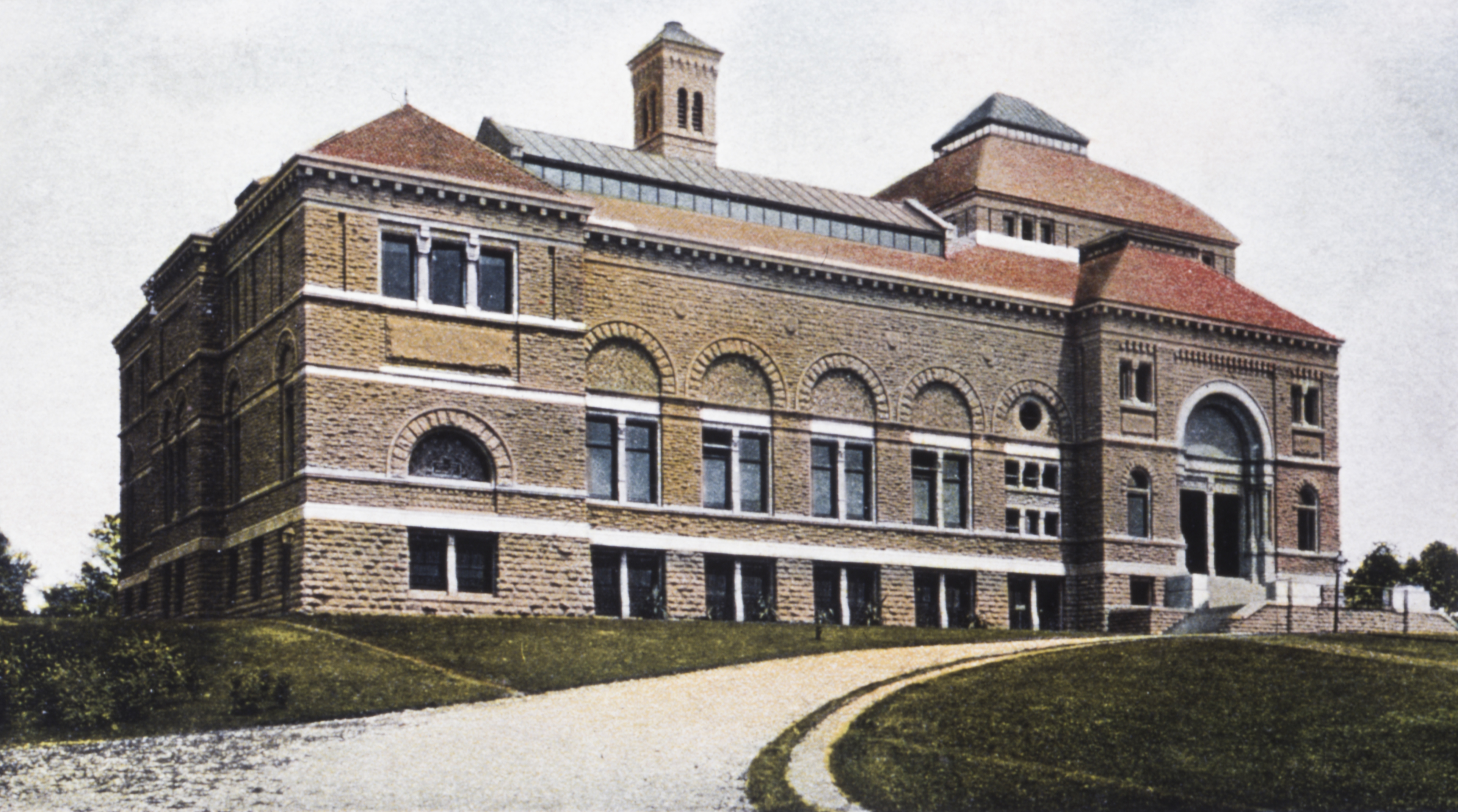
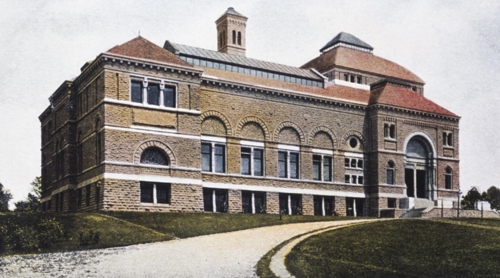
On May 17, 2016 the Cincinnati Art Museum will be 130 years old. It was on that day back in 1886- when Grover Cleveland was still serving his first term in the White House and there were only 38 states – that the original Museum building was dedicated. Although a 130th anniversary isn’t one that typically gets a fanfare, we love any excuse to celebrate our history, so if you visit the Museum’s Mary R. Schiff Library during May you’ll be able to see a display of early documents from the archives relating to the founding of the Museum, as well as photographs of the original building, and some of the items found in a time capsule that was buried during the building’s construction.
The opening of the Art Museum in 1886 was actually the culmination of a series of efforts to promote the arts in Cincinnati dating as far back as the 1820s, but it was the gift of $150,000 by Mr. Charles W. West, a local businessman and philanthropist, in September 1880 - specifically for the construction of an Art Museum building - that was directly responsible for the enabling the project to go ahead. West’s offer was made on one condition - that a similar sum could be raised by citizens of Cincinnati within a year; the sum was actually matched within one month. That people were so willing to contribute was largely thanks to the efforts of the Women’s Art Museum Association (WAMA), an organization formed in 1877 to promote the arts in Cincinnati and draw attention to the social and economic benefits an art museum would have for the city.
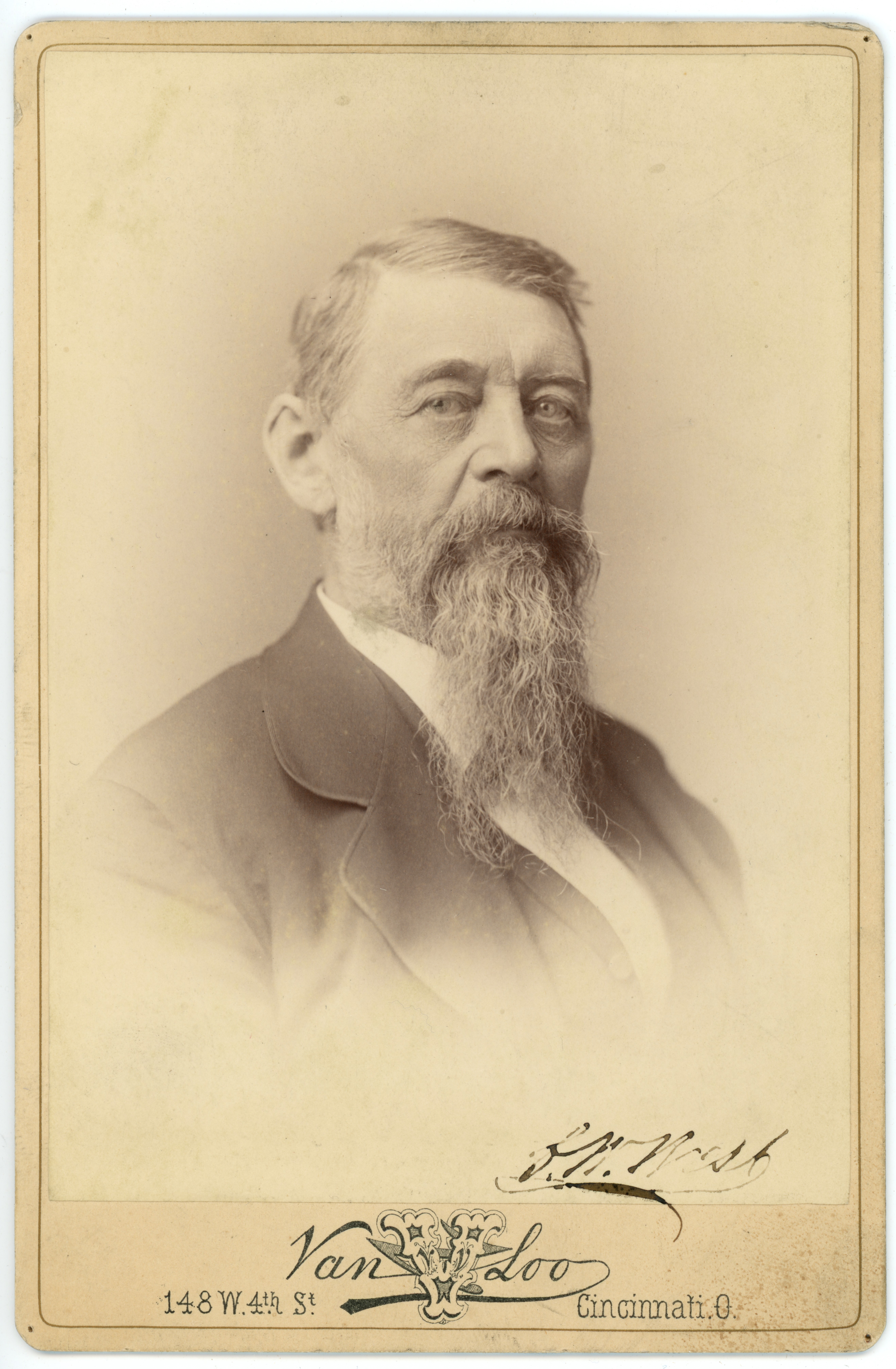
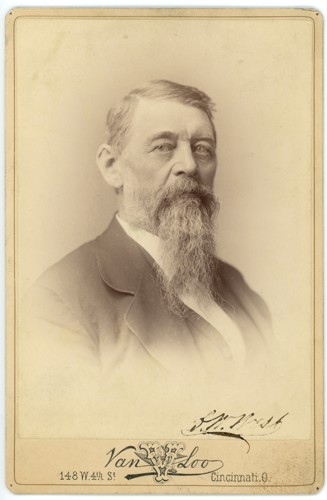
Charles W. West
With funds in place, the Cincinnati Museum Association was incorporated in February 1881 to oversee the establishment of the Museum. A year later, in February 1882, the city of Cincinnati gave 19 acres of land in Eden Park as a site for the Museum. Construction began on September 25, 1882, with architect James W. McLaughlin describing the building he designed as follows:
“It is in the Romanesque style, of a simple and bold character. The walls are massive, and constructed of local blue limestone…The arches, string courses, cornices, etc., are of red granite from Missouri. The entrance is marked by an imposing archway, flanked by double polished columns of Bay of Fundy granite. The windows are spacious and filled with large sheets of polished plate glass, and the roof is covered with red Akron tiles.”
McLaughlin’s original building is now largely hidden by later additions, with only its dome, tower and west façade still visible from the outside. Inside the Museum, however, you can see the original entrance, with its “double polished columns of Bay of Fundy granite” as you pass from McLaughlin’s building into the Cincinnati Wing, which was added in the 1960s.
During construction of the original building, a time capsule was buried somewhere on the site. We’re unsure of the exact location because at some point the lead box was dug up – probably when the Schmidlapp Wing was added in 1907 – before eventually finding its way to a scrap metal dealer who (thankfully) returned it to the Museum in 1939, contents intact. As well as local newspapers from 1895 and photographs of some of the Museum founders, the capsule also contained lists giving the names of people who worked on the building. One of these lists the men who built the Museum’s original grand staircase - you can see this document in the Library display case during May – whilst a second list (shown below) gives details of other contractors who worked on the project. Be sure to check these out to see if your ancestor had a hand in building the Museum!
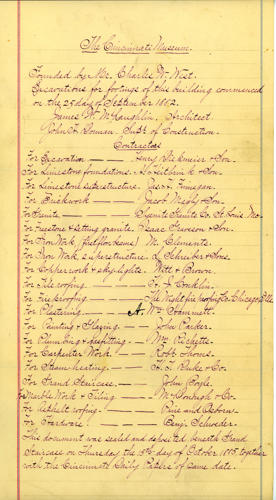
List of contractors who worked on the original Museum building,
found in a time capsule buried in 1885.
Construction was completed on December 31, 1885, and an opening date was set for May 17, 1886. Invitations to attend the opening ceremonies were sent to the local great and good, as well as other notable figures, such as former President Martin Van Buren and the incumbent President, Grover Cleveland. On April 6, 1886, the Museum’s first director, Alfred T. Goshorn, wrote to the White House:
“I have the honor on behalf of the Cincinnati Museum Association, to extend to your Excellency a most cordial invitation to be present at the dedication of the Art Museum building in Eden Park, on Monday the 17th day of May next. The citizens of this city have erected by private contributions one of the finest buildings of its kind in this country. It will be devoted to art education and to the formation of good taste and an appreciation of art in the industries.”
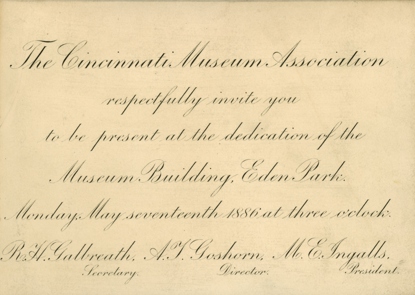
Despite the cordial invitations, both the current and former Presidents declined.
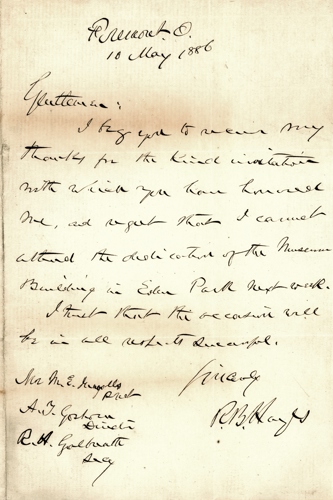
Letter from Rutherford B. Hayes
With the Museum’s opening date approaching, practical matters like staffing had to be addressed. In the Museum’s archives are a series of letters sent to Director Goshorn by those hoping for a job, or recommending others for a post. One letter of recommendation, dated February 1886, was sent by a former member of the Women’s Art Museum Association, who wrote:
“Do you remember a very pretty little lady, Miss Lord, who had the charge of the Museum Rooms at the Music Hall when they were held by the Women’s Art Museum Association? It is the duty of every woman to be pretty, but Miss Lord was more than pretty, she was efficient and exact, and took excellent care of our rooms as far as our limited means would allow her to do so.”
A particularly desperate plea for a position came from a man who, in April 1886, wrote:
“[my] present circumstances are such that I am driven almost to despair as to how the future will serve me…Unless some opening is at the Museum that you will give me, I hardly know what will become of me”.
Unfortunately there is no record of the response to either letter.
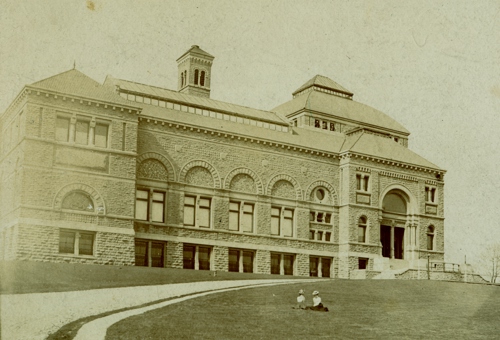
The day of the Museum’s opening finally arrived and was described as follows in local newspapers:
“The recent storms had but added an emerald brilliancy to the verdure of the hills, and as they rolled in graceful slopes to the empurpled line that closed in the horizon, those who gazed at the scene from window, gallery and steps, thought that surely no scene that painter could put upon canvas could be so fair as that to be enjoyed from the site of Cincinnati’s Art Museum.” (The Graphic, May 22, 1886).
“The day for the opening exercises could not have been more propitious. The warm May-day sun was bright and cheering, and the suburban hills were transformed into veritable gardens of Eden by the light that fell upon them. Every car that went to Eden Park was filled with the most cultured and educated people, and long before the hour of dedication the green lawns were thronged with visitors [reports estimated that up to 5000 people attended that day], and the broad drives of the park were completely occupied by the brilliant equipages of wealthy citizens and their families...
The building is magnificent in design and finish, being the finest devoted to such a purpose in the country…Every citizen should become a frequent visitor and should make himself so well acquainted as to be able to show a visitor from one end of the collection to the other and explain every work without the use of a catalogue. To make the most of such an advantage our people should not only make frequent visits themselves, but should take their children, and should not forget to see that visitors to the city are reminded of the pleasure and profit to be derived from a visit.” (The Sun, May 18, 1886)
The opening ceremony included speeches from M.E. Ingalls, President of the Museum Association’s Board of Trustees, Cincinnati Mayor Amor Smith, Jr. and Director Goshorn, interspersed with musical performances by the College of Music Choir and the Apollo Club. In his address, M.E. Ingalls summed up the Museum Association’s progress so far, but noted that, “while it shows gratifying results and foundations well laid, I cannot but feel that our real work is just beginning.” How right he was.
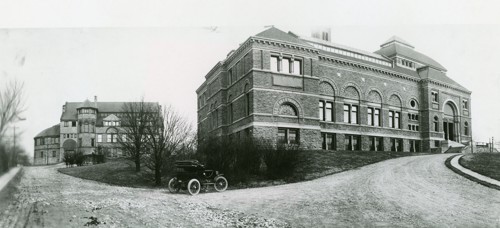
For more information on the history of the Cincinnati Art Museum, the following books – available for reference in the Mary R. Schiff Library – are recommended:
“The Ladies, God Bless ’Em: The Women’s Art Movement in Cincinnati in the Nineteenth Century”, Cincinnati Art Museum (1976) - accompanied the exhibition of the same name
“Art Palace of the West: Cincinnati Art Museum, A Centennial Tribute, 1881-1981”, Cincinnati Art Museum (1981) - accompanied CAM’s centennial exhibition of the same name
“The Queen and the Arts: Cultural Life in Nineteenth-Century Cincinnati”, by Robert C. Vitz, Kent State Univ Press (1989)
“Cincinnati Art Museum Collections Highlights”, Giles (2008) - includes essays on the history and growth of CAM






